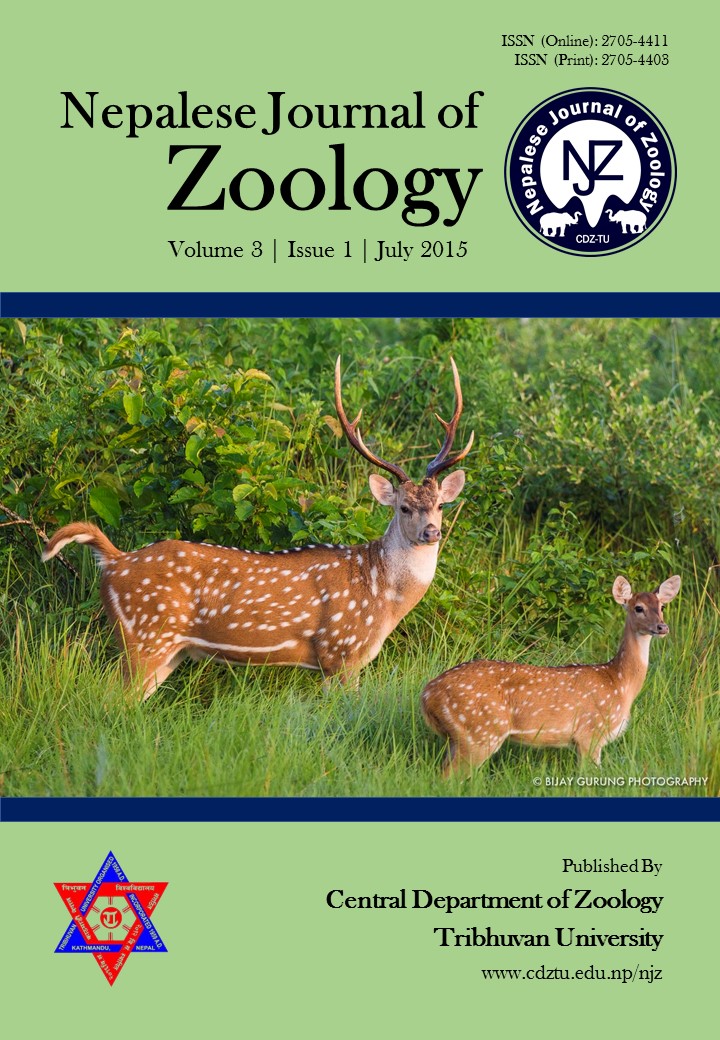Agnostic Interaction between Rhesus Monkey and Human at Swayambhu and Pashupati Area, Nepal
DOI:
https://doi.org/10.3126/njz.v3i1.30870Keywords:
Urban Rhesus-Human Conflict, Agonistic Behaviour, NepalAbstract
The study was designed using Scan Sampling and Ad libitum recording to investigate the interaction between Rhesus monkey and Humans in Pashupatinath Temple Area and Swayambhunath Stupa Area for a total of 250 hours (8 hours per day; from 9:00 a.m.-5:00 p.m.). Interactions at Swayambhu were occurring high in midday (1p.m. to 2 p.m.) and at Pashupati interactions were occurring high in morning (10 a.m. to 11 a.m.) and evening (4 p.m. to 5 p.m.). Monkey interacted more for the context of food while humans interacted for recreation purpose. Biting was observed only in Swayambhu area. Agonistic behaviour by human was 44% at Pashupati and 34.7% at Swayambhu and Agonistic monkey behaviour was 23.1% at Swayambhu while 22.4% at Pashupati. Living in commensalism with human agonistic behaviour of monkey was high in response to human behaviour rather than through its initiation and also monkeys’ have devised passive behavior strategy during presence of food. Threat shown by monkey at both places tends to increase in absence of food. Female monkey individuals residing in Swayambhu initiate more encounters (58%) than of Pashupati (28%) area while the overall encounter was accounted for male individual. Female monkey individuals were likely to start an encounter at Swayambhu preferring agonistic behaviour during encounter than male individuals while at Pashupati male monkey individual were likely to prefer agonistic behaviour.
Downloads
Downloads
Published
How to Cite
Issue
Section
License
This license enables reusers to distribute, remix, adapt, and build upon the material in any medium or format for noncommercial purposes only, and only so long as attribution is given to the creator.

